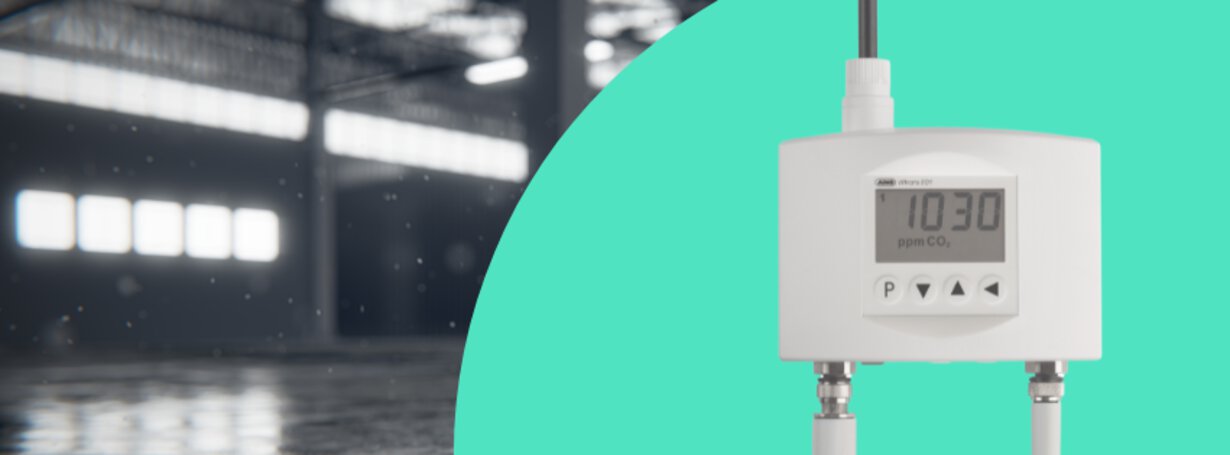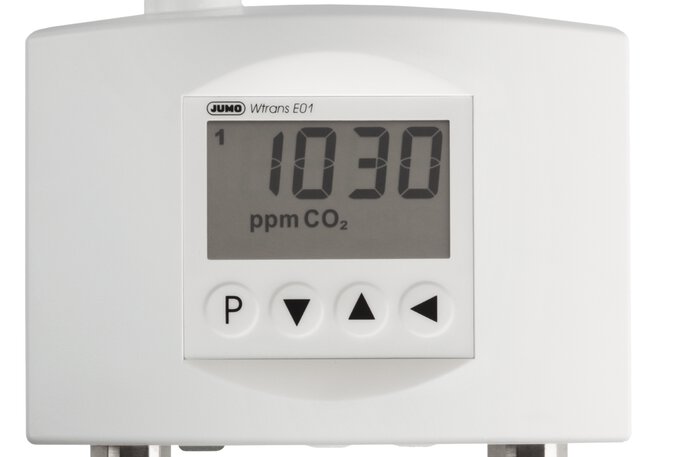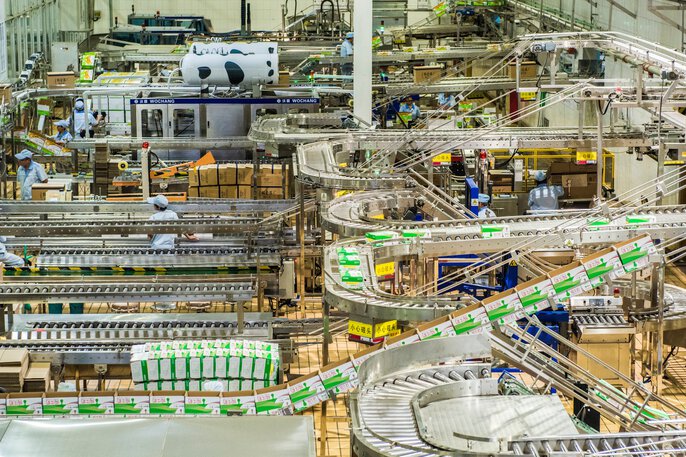

Wireless temperature and humidity monitoring system – industrial applications
In many industries – from food and pharmaceuticals, through data centres, to museums and sports facilities – precise temperature and humidity control is essential for the proper functioning of technological processes and ensuring appropriate storage conditions. Overheating of electronic equipment in server rooms, moisture condensation in industrial warehouses, and damage to museum exhibits caused by improper humidity are just a few examples of real threats. In this post, we will show you how the use of a wireless monitoring system can help to effectively prevent these kinds of problems, supporting the work of engineers responsible for maintaining the continuity of operations and the safety of valuable resources. Read on to find out how you can implement wireless temperature and humidity monitoring in your company too!
How does the wireless temperature and humidity control system work with the IOT SCADA Cloud platform?
The wireless environmental parameter monitoring system from JUMO consists of Wtrans E01 precision sensors, a variTRON central PLC and a cloud-based IoT SCADA Cloud platform. JUMO Wtrans E01 sensors continuously measure humidity, temperature and carbon dioxide levels, transmitting the data wirelessly (via radio, at 868.4 MHz) directly to the variTRON control unit. Thanks to its modular design, the controller allows easy integration with existing plant automation systems and flexible scaling of the solution as needed.
The collected measurement data then goes to the secure, cloud-based JUMO SCADA Cloud platform, providing remote access to current process parameters from anywhere in the world via a web browser. The software enables intuitive visualization of data, generation of alarms in the form of SMS or e-mail notifications, and daily, weekly or monthly reports. All this while maintaining the highest standards of data security.
The main benefits of this solution are the absence of wiring, fast and non-invasive installation, high precision and reliability of measurements, and the ability to respond immediately to any deviation from the set parameters. As a result, the system effectively minimizes the risk of failure, increases efficiency and provides full control over technological processes.

Temperature and humidity and CO2 sensor with wireless radio transmission JUMO Wtrans E01 (902928)
How do humidity and temperature measurements in museums and
cultural institutions help protect artifacts and instruments?
In institutions such as museums, art galleries and philharmonics, one of the most important tasks is to ensure stable environmental conditions, especially temperature and humidity. Even slight deviations from the established parameters can cause serious and permanent damage: the wood of musical instruments can become unsealed or cracked, paintings can become distorted, and archival documents can irretrievably lose their value. In such places, wireless systems for monitoring environmental conditions are particularly well suited, enabling constant control of parameters without the need to run cables or interfere with the structure of buildings. Solutions of this type allow ongoing, remote monitoring of parameters such as temperature, humidity and CO₂ levels, as well as rapid detection of irregularities through automatic SMS or e-mail alerts.
As a result, preventive action can be taken quickly, effectively minimizing the risk of damage to valuable collections, artifacts and musical instruments. This approach ensures a high level of security with minimal interference with historical objects.

Temperature and humidity monitoring in cultural institutions is key to protecting exhibits
Agriculture and horticulture - how does wireless monitoring
ensure optimal crop conditions?
In cultivation facilities, such as greenhouses or seed stores, even small fluctuations in temperature and humidity can reduce crop quality or cause crop loss. A wireless monitoring system makes it possible to precisely measure these parameters without the need to run wires, significantly reducing installation time and costs. Probes placed at key points transmit data directly to the central system, ensuring that deviations are quickly detected and allowing immediate response, such as by activating ventilation or irrigation systems. This ensures that crops are grown under optimal conditions, reducing production risks and improving efficiency.

In greenhouses and seed stores, fluctuations in temperature and humidity can cause yield loss
Industry and logistics - how does wireless measurement
of temperature and humidity reduce the risk of failures and downtime?
In manufacturing plants and logistics facilities, maintaining the right temperature and humidity is important for maintaining product quality and the proper operation of machinery. Deviations in these parameters often lead to condensation of moisture, corrosion of metal components or damage to goods sensitive to environmental conditions.
The use of wireless monitoring makes it possible to quickly detect even small changes in temperature or humidity at strategic points in the plant, such as at production lines, warehouses or material storage areas. Thanks to immediate alerts, technical personnel can react immediately and prevent critical situations, avoiding equipment failures, product damage or costly production downtime.

In manufacturing plants and logistics facilities, maintaining proper temperature and humidity is important for maintaining product quality and proper operation of machinery
Building automation (HVAC) - how does a temperature and humidity monitoring system increase energy efficiency and indoor comfort?
In building automation, stable temperature, humidity and CO₂ levels determine the comfort of users and the energy efficiency of HVAC systems. Wireless monitoring of these parameters allows their precise control without the need for additional wiring. With real-time data, you can react quickly to changes in conditions, avoiding excessive energy consumption and improving indoor air quality.
The system is easy to install, and its flexibility allows it to be used in both newly constructed and retrofitted buildings.

In building automation, stable temperature and humidity determine the comfort of users
Digital archives and server rooms - how does a temperature and humidity monitoring system protect IT equipment and data?
In server rooms, data centers and digital archives, even small changes in temperature and humidity can cause major IT equipment failures and loss of stored data. The wireless monitoring system instantly detects deviations from the required parameters, enabling quick response with automatic notifications. Measurement data is available online, facilitating management and ensuring continuity of infrastructure operation. The solution is simple to deploy, requires no cable routing, and most importantly, effectively minimizes the risk of costly failures and downtime.

In data centers, fluctuations in temperature and humidity can cause IT equipment failure and loss of stored data
Sports facilities - how does a temperature and humidity measurement system improve the comfort of players and spectators?
In sports facilities such as arenas, swimming pools and ice rinks, maintaining stable temperature and humidity parameters has a significant impact on the comfort of users and the quality of the surface. A wireless monitoring system makes it possible to control these conditions on an ongoing basis without costly interference with the infrastructure. Sensors placed at selected locations transmit data in real time, allowing a quick response to changes. This avoids problems such as condensation, deterioration of the ice or discomfort for players and spectators. The solution is simple to install, effective in operation and supports the maintenance of optimal conditions in sports facilities.
Case study - how did the Sudeten Philharmonic use a solution to measure and control temperature and humidity to protect musical instruments?
The Sudecka Philharmonic Orchestra in Walbrzych was struggling with the problem of damage to valuable instruments caused by fluctuations in humidity and temperature. The wood was cracking, which generated costs and organizational problems. Our wireless monitoring system was used there, with sensors placed at key locations, including the concert hall and instrument storage, and the IOT JUMO SCADA Cloud platform. The system provides constant measurement of parameters and automatic notifications of exceedances, which enables quick preventive action. The result of the implementation is improved storage conditions for instruments and increased security of collections, without interfering with the building's structure.
About the author
My name is Ewelina Szmit and I have been involved in content marketing for several years, combining my professional skills with my passion for writing. I am convinced that even the most technical topics can be presented in an interesting and accessible way for everyone. Outside of work, I unleash my creativity by creating collages for newspapers. I like to spend my free time actively, walking my dog or running.

Technical Specialist
Katarzyna Tracz - Inside Sales Engineer +48 71 339 32 86 Katarzyna.Tracz@JUMO.net +48 71 339 32 86Comments
We encourage you to leave your comments via the form below. They will be posted online once they have been approved through our review process.


